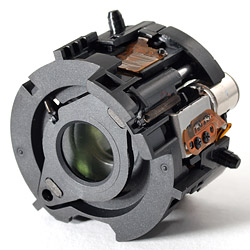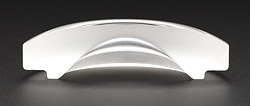Olympus today moves to address that issue, announcing another firmware update that will apply to all three models currently on the market: the original E-P1, the E-P2, and latest E-PL1. The update is expected to be available on April 22, 2010.
Olympus has also released more detail about some of the technology included in the much-anticipated 9-18mm f/4-5.6 and 14-150mm f/4-5.6 M.Zuiko Digital ED lenses expected to ship in May and June of this year.
We were allowed to test an updated Olympus E-PL1 to see just how much the firmware update would improve the full-autofocus shutter lag speed with the two existing lenses, as well as with the new 9-18mm lens that we're currently testing for posting on SLRgear.com. Results of the speed test are below.
| Lens | Firmware 1.0 | Beta Firmware | Percent Improvement |
| 14-42mm L @42mm | 0.89 | 0.79 | 11% |
| 14-42mm L @14mm | 0.95 | 0.82 | 14% |
| 17mm | 0.86 | 0.75 | 12% |
| 9-18mm @18mm | 0.55 | 0.47 | 14% |
So on average we found a 13 percent improvement in full-autofocus shutter lag speed with the E-PL1 overall. Given the slower numbers we saw from the original E-P1, some users could see considerably greater improvement, as it seems Olympus has improved performance a few times since the release of the E-P1. 13% is not a huge difference, but it is always good to speed things up.
For our part, neither Dave nor I were really bothered by the slow autofocus speed when shooting with the PEN series. There's no question, though, that the original timings were considerably slower than the average digital camera, and a lot slower than the usual digital SLR times, which hover around 0.35 second and faster for the latest cameras.
The 9-18mm in particular brings the Pen series to within striking distance of the Panasonic GF1's fastest performance, which measured about 0.42 second with their kit lenses.
In use, both of the original lenses seem to focus a little faster, with the 17mm in particular seeking the near field quite a bit more quickly than the old firmware. Shooting with the 9-18mm is a dream, feeling like any other SLD camera.
Olympus says they've also improved continuous focus tracking for still and movie modes. We have no way of testing this aspect, but the lens does seem to adjust focus less dramatically as a subject moves around the screen.
When the firmware finally ships on April 22, 2010, it will also include a little fix for E-P2 and E-PL1 owners that allows both the VF-2 electronic viewfinder and the LCD to remain active at the same time. It's one thing to frame your image with the viewfinder, but many of us are used to viewing images and making menu settings on the LCD, where it's easier to see the navigation buttons. Having to turn off the optional electronic viewfinder to make a menu setting is often frustrating.
The software will be made available via a special web page, which will prompt users to attach their cameras for update, much as users have done via the Olympus Master software.
New lens technology
 Simultaneous with their firmware announcement, Olympus has revealed a few more details about the two upcoming lenses, the 9-18mm f/4-5.6 and 14-150mm f/4-5.6 M.Zuiko Digital ED.
Simultaneous with their firmware announcement, Olympus has revealed a few more details about the two upcoming lenses, the 9-18mm f/4-5.6 and 14-150mm f/4-5.6 M.Zuiko Digital ED.
Both lenses are said to be motion and still-picture compatible, and thus designated "MSC." Special quiet MSC motors are tuned to focus quickly and accurately, as well as silently for better HD movies in particular.
 Using a precise molding process, Olympus says they are the first manufacturer to mass-produce dual-sided super-aspherical lenses. It's not just the mold that needs precision, but temperature control across all of the mold's inner surfaces for even cooling across the lens surface to minimize distortion. This becomes especially important when the glass has such dramatically thin and thick areas, as seen in the slice above left.
Using a precise molding process, Olympus says they are the first manufacturer to mass-produce dual-sided super-aspherical lenses. It's not just the mold that needs precision, but temperature control across all of the mold's inner surfaces for even cooling across the lens surface to minimize distortion. This becomes especially important when the glass has such dramatically thin and thick areas, as seen in the slice above left.
The 9-18mm lens is very small and light, with a smooth zoom mechanism. Like the 14-42mm kit lens, the 9-18 retracts to a very short position for storage, but must be deployed forward and locked into its 9-18mm zoom range before it can be used.
The 9-18mm M.Zuiko Digital lens (18-36mm eq.) will ship in May, with an MSRP of $699.99, and the 14-150mm M.Zuiko Digital lens (28-300mm eq.) will ship in June for an MSRP of $599.99.